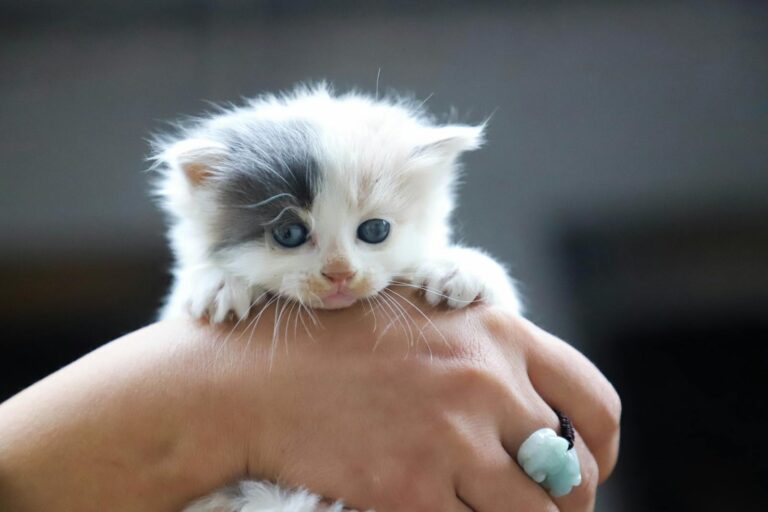Should You Spay or Neuter Your Cat? Here’s Why It Matters
Should You Spay or Neuter Your Cat? Here’s Why It Matters. The decision to spay or neuter your cat is not just a personal choice; it’s a commitment that affects their health, behavior, and the broader community. Understanding the implications of this decision can help ensure a healthier life for your feline friend and contribute positively to the pet population.
Spaying/Neutering Your Cat: An Overview
When considering whether to spay or neuter your cat, it’s essential to understand what these procedures entail, their implications, and the lifelong responsibility they encompass. Spaying involves the surgical removal of a female cat’s ovaries and usually her uterus, while neutering means removing the testicles from a male cat. Both surgeries are common practices in veterinary medicine and are typically performed under general anesthesia.
These procedures not only prevent unwanted litters but also offer various benefits that go beyond simply reducing the number of cats in shelters. The conversation around spaying and neutering often revolves around ethical considerations, public health concerns, and even legislation aimed at controlling the pet population. It’s crucial to bridge the gap between information and understanding, as misconceptions can lead to hesitation in making this significant decision.
What Does Spaying/Neutering Involve?
Spaying and neutering are straightforward surgical procedures performed by licensed veterinarians.
Spaying a Female Cat:
- This involves making an incision in the abdomen to remove the ovaries and possibly the uterus.
- The procedure takes about 30 minutes, and most cats return home the same day.
Neutering a Male Cat:
- This procedure involves making a small incision in the scrotum to remove the testicles.
- Like spaying, this procedure is quick and typically allows for a same-day discharge.
Both surgeries require some post-operative care and monitoring, but complications are rare when performed by a qualified veterinarian.
The Right Age for Spaying/Neutering
The ideal age for spaying or neutering varies based on several factors, including breed, size, and individual health conditions. Most veterinarians recommend spaying or neutering cats between 5 to 6 months of age. At this stage, cats are mature enough for surgery but before they reach sexual maturity, which can help mitigate potential behavioral issues associated with mating instincts.
However, some shelters and rescue organizations advocate for early spaying/neutering, sometimes as young as eight weeks of age, particularly for kittens adopted out through their programs. Early intervention can significantly help control the pet population and reduce the likelihood of behavioral problems later on.
Financial Considerations
Cost can often be a concern when deciding to spay or neuter a cat. While the initial expense might seem daunting, consider the long-term savings:
- Preventative Care: Spaying and neutering can prevent costly health issues down the road, such as uterine infections in females or testicular cancer in males.
- Community Responsibility: Reducing the number of stray animals lowers the burden on local shelters and resources, potentially saving taxpayers money in animal control efforts.
- Insurance Implications: Some pet insurance plans cover spaying and neutering, leading to reduced overall costs.
Investing in your cat’s health today can save you considerable expenses in the future.
The Importance of Spaying and Neutering
The larger implications of spaying and neutering extend far beyond individual households. Each year, millions of cats enter shelters across the United States, many of whom face euthanasia due to overcrowding. By taking part in spaying and neutering efforts, you help combat this tragic cycle.
Understanding why spaying and neutering matter can help motivate cat owners to make informed decisions that benefit both their pets and society as a whole.
Addressing Overpopulation
Pet overpopulation is a pressing issue faced globally, where the number of animals in need far exceeds available homes.
- Statistics: Estimates suggest that nearly 3.4 million cats enter U.S. shelters every year, with only about half finding homes.
- Community Impact: Stray populations increase the risk of transmitting zoonotic diseases, which can affect human health. Additionally, unchecked breeding leads to feral colonies that can significantly impact local ecosystems.
Spaying and neutering are powerful tools in ending this cycle. By ensuring that your pet is fixed, you contribute to the fight against overpopulation and help create a more sustainable environment for all animals.
Behavioral Considerations
Beyond health and reproduction, spaying and neutering have a significant impact on cat behavior. Unaltered cats often exhibit behaviors linked to their drive to mate or defend territory.
Female Cats:
- A female cat in heat may meow more frequently, display unusual affection, and attempt to escape outdoors to find a mate.
- After being spayed, these behaviors generally subside, leading to a calmer, more content cat.
Male Cats:
- Unneutered males may engage in territorial marking, aggression towards other animals, and wandering off in search of mates.
- Neutering decreases these behaviors, resulting in a more manageable and sociable pet.
These behavioral changes not only enhance the quality of life for your cat but also improve the household environment, leading to a happier coexistence with humans and other pets.
Long-Term Community Health
When you choose to spay or neuter your cat, you’re making a decision that impacts not just your pet, but your entire community. Fewer strays lead to lower risks of disease transmission and reduce strain on local animal shelters and rescue organizations.
Communities with higher rates of spayed and neutered pets tend to experience fewer incidents of nuisance complaints related to noise, such as excessive yowling from cats in heat or fighting among unaltered males. By taking a responsible approach to pet ownership, you contribute to a better living environment for everyone.
Health Benefits of Spaying/Neutering for Female Cats
Spaying offers numerous health advantages that can significantly enhance the quality of life for female cats. These benefits extend into their senior years and help mitigate various health risks associated with reproductive organs.
Prevention of Reproductive Diseases
One of the most compelling reasons to spay a female cat is the significant reduction in the risk of certain reproductive diseases.
- Uterine Infections: Pyometra, a severe and potentially fatal infection of the uterus, is completely eliminated when a cat is spayed. This condition primarily affects older, unspayed females and involves intensive treatment if diagnosed late.
- Breast Cancer: Spaying before the first heat cycle reduces the risk of mammary tumors, which are malignant in approximately 90% of cases. Studies indicate that cats spayed before six months of age have a markedly lower chance of developing breast cancer compared to those that are not spayed.
By opting for spaying, you protect your female cat from these serious health issues and promote a longer, healthier life.
Enhanced Longevity
Research indicates that spayed female cats tend to live longer than their unspayed counterparts.
- Reduced Risk of Diseases: As previously mentioned, spaying eliminates the risk of pyometra and lowers the chances of breast cancer.
- Healthy Weight Management: Spayed cats tend to maintain a healthier weight, as they are less driven to roam or seek out mates, which can lead to injuries or accidents.
With enhanced longevity comes the opportunity for deeper bonds between cats and their owners. A longer life means more time spent together, forging memories that last a lifetime.
Behavioral Changes Post-Spaying
Many owners notice positive behavioral changes after their female cats are spayed.
- Decreased Aggression: Female cats can become aggressive during heat cycles, which may lead to destructive behaviors. Spaying tends to calm these tendencies, fostering a peaceful home environment.
- Less Urge to Escape: Spayed females are less likely to try to escape in search of a mate, reducing the risk of injury from car accidents, fights with other animals, or getting lost.
These behavioral adjustments contribute to a more harmonious household, making them easier companions for families.
Health Benefits of Neutering for Male Cats
Neutering male cats brings numerous health benefits that greatly influence their overall well-being and longevity. Alongside behavioral improvements, neutering plays a vital role in promoting healthy development throughout their lives.
Prevention of Testicular Cancer
One of the most notable health benefits of neutering is the prevention of testicular cancer.
- Testicular Health: Unneutered male cats have a higher risk of developing tumors in the testicles. By neutering your cat, you eliminate this risk entirely.
This preventative measure is a straightforward way to safeguard your pet’s health and avoid potential complications arising from untreated conditions.
Lower Probability of Prostate Issues
Neutering also decreases the likelihood of prostate-related problems in male cats.
- Prostate Enlargement: Unneutered males are susceptible to benign prostatic hyperplasia (an enlarged prostate), which can cause discomfort and urinary issues. Neutering mitigates this risk.
By choosing to neuter, you’re averting this common affliction and helping your cat enjoy a more comfortable existence without the pain associated with prostate problems.
Behavioral Improvements Post-Neutering
Behavioral changes manifest notably in male cats following neutering.
- Reduced Marking: One of the primary motivations for neutering is eliminating urine marking behavior, which can be problematic in multi-cat households. Neutered males are significantly less likely to mark their territory indoors.
- Calmer Demeanor: Male cats often exhibit heightened aggression and dominance prior to neutering. Post-surgery, many owners report calmer and more affectionate behavior, leading to a more enjoyable companionship.
These behavioral changes reinforce the benefits of neutering, allowing for a smoother integration into family life.
Addressing Common Concerns and Misconceptions
Despite the multitude of benefits associated with spaying and neutering, several concerns and misconceptions often deter cat owners from proceeding with these essential procedures.
Myths About Surgery Risks
One of the most prevalent fears surrounding spaying and neutering revolves around the perceived risks associated with surgery.
- Anesthesia Concerns: Many owners worry about the dangers of anesthesia. However, modern veterinary practices employ advanced anesthetic protocols tailored to each pet’s needs, minimizing risks. Complications are rare, particularly in healthy cats.
- Pain and Recovery: There’s a misconception that spaying and neutering are extremely painful procedures. In reality, veterinarians manage pain effectively through medication, and most cats recover quickly, returning to normal activity within days.
Understanding these factors can alleviate anxiety and encourage responsible pet ownership.
Fear of Weight Gain
Another prevalent concern is that spaying and neutering lead to significant weight gain.
- Metabolism Changes: While it’s true that hormone changes can impact metabolism, the key to maintaining a healthy weight lies in proper diet and exercise after surgery. Owners play a critical role in ensuring their pets receive balanced nutrition and regular physical activity.
Instead of viewing weight gain as an inevitable outcome, consider it an opportunity to adjust feeding habits and include playtime in your daily routine.
Emotional Bonding and Behavior
Some owners fear that altering their pets will change the emotional bond they share.
- Affectionate Behavior: Spayed and neutered pets tend to exhibit increased affection and sociability, as they aren’t driven by mating instincts. Instead of diminishing their personality, these procedures can enhance their ability to interact positively with their owners.
- Less Stress: Altered pets often experience decreased stress levels because they are less preoccupied with territorial disputes or the need to mate. This leads to stronger bonds between owners and their pets.
Understanding these aspects can foster a sense of reassurance for those contemplating the procedures.
Making the Right Decision for Your Cat and Community
Ultimately, the decision to spay or neuter your cat comes down to balancing personal beliefs with the broader implications for both your pet and the community at large. Every responsible pet owner must carefully consider the pros and cons while keeping in mind the welfare of their felines and the collective impact on local animal populations.
Weighing Individual Needs
Each cat has unique needs shaped by its temperament, lifestyle, and environment.
- Behavioral Traits: Some cats may naturally be more reserved, making them less prone to the negative effects of remaining unaltered. Conversely, more active cats may greatly benefit from the behavioral modifications provided by spaying or neutering.
- Health Factors: Existing medical conditions may necessitate special consideration. Always consult with a veterinarian to determine the best course of action for your individual pet.
Being mindful of these factors ensures that you make an informed decision that aligns with your cat’s specific requirements.
Community Responsibility
Responsible pet ownership extends beyond individual households and encompasses a broader commitment to the well-being of all animals in the community.
- Community Initiatives: Many communities offer subsidized spaying and neutering programs to assist low-income pet owners in accessing these essential services. Engaging in these initiatives helps promote higher rates of spaying and neutering in your area.
- Advocacy: Support local animal welfare organizations that focus on education and outreach regarding the importance of spaying and neutering. Getting involved not only promotes awareness but can also lead to tangible changes in your community’s approach to animal care.
Fostering a sense of community responsibility encourages a culture of compassion and respect for all living beings.
Seeking Professional Guidance
Navigating the decision to spay or neuter can feel overwhelming. Consulting with professionals, such as veterinarians or animal behaviorists, provides valuable insight tailored to your specific situation.
- Veterinary Expertise: A veterinarian can assess your cat’s health, provide recommendations based on age and breed, and answer any questions about the surgical process.
- Behavioral Consultations: Speaking with a certified animal behaviorist can also shed light on how spaying or neutering could affect your cat’s behavior, equipping you with the necessary knowledge to make an informed decision.
Educating yourself and seeking advice from trusted professionals can empower you to make the right choice for your furry companion.
Conclusion
Choosing to spay or neuter your cat is a significant decision with far-reaching implications not only for your pet’s well-being but also for the community at large. The health benefits—ranging from reduced risks of cancer and infection to improved behavior and increased longevity—are compelling arguments in favor of these procedures. While there may be concerns about surgery and emotional attachment, informed decisions made in consultation with veterinary professionals can alleviate these worries. Ultimately, spaying or neutering your cat is a responsible act that fosters a healthier and more humane society for all animals.







